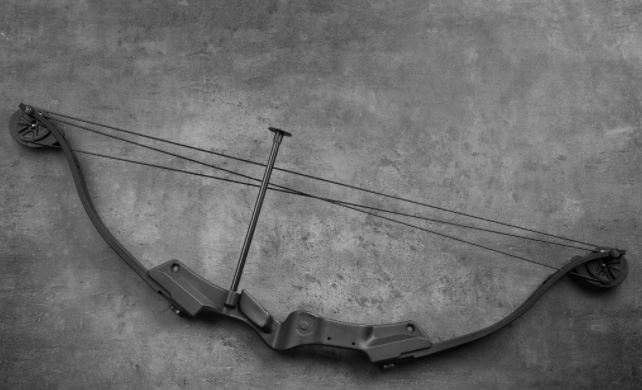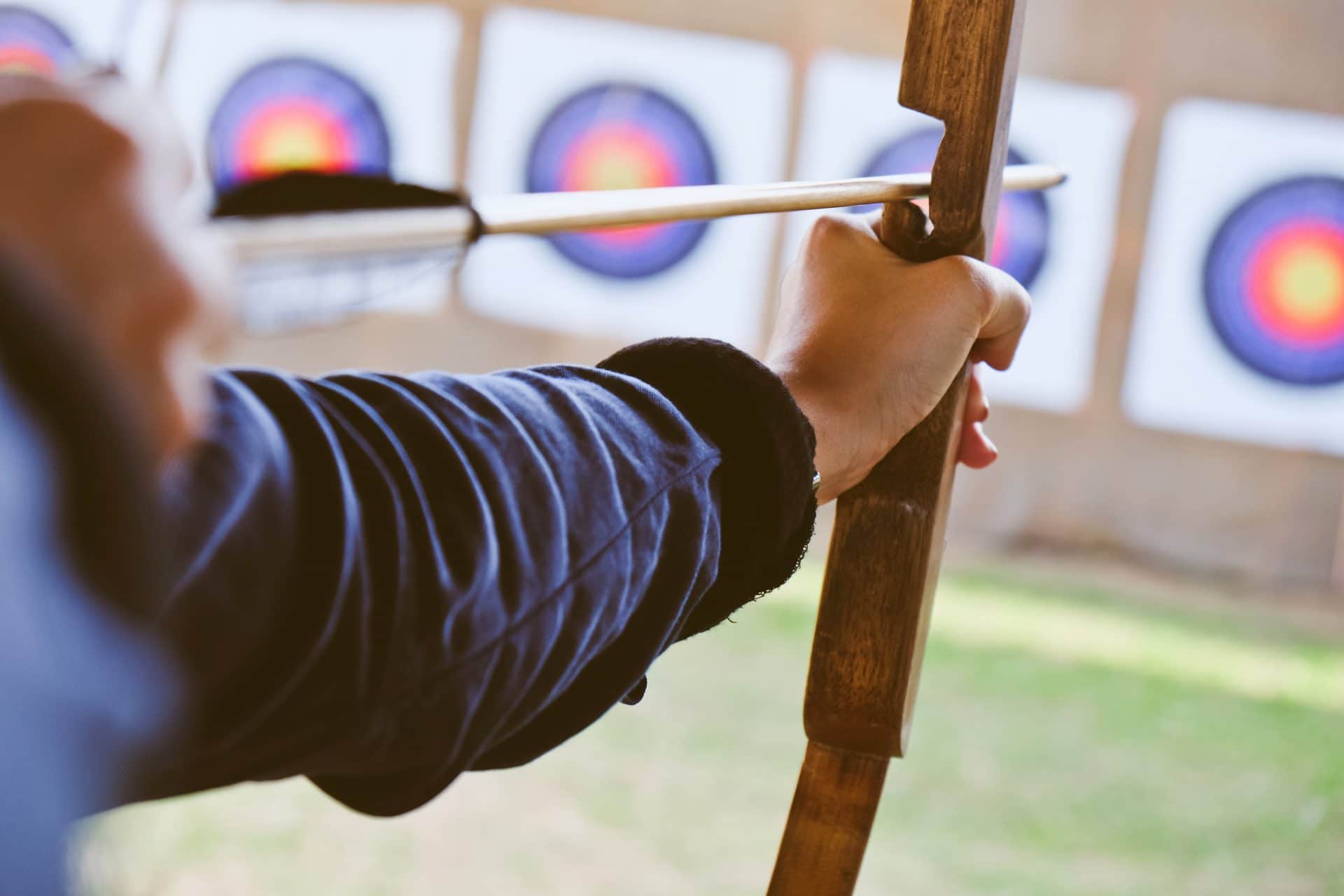Comparisons are always being made between different bow types, but is one really better than the others? We have examined the pros and cons of bow types in comparison before, and we’re back with another: compound bow vs. longbow.
Throughout this post, I will give a brief overview of the background of each bow, the pros and cons, and how they are commonly used. While reading this article, it is worth keeping in mind that in the end, the best choice of bow is down to personal preference.
Some bows will always outperform others in certain situations, but the best bow is the one that you enjoy using the most.
Compound Bow – What is it?
Seeing prominence in-line with their development throughout the 1960s, compound bows quickly became a favorite of bowhunters across North America.
By using a mechanical system of pulleys and cams, compound bows provide the archer with ‘let-off,’ which reduces the draw weight at full draw.

This let-off means the archer can hold their shot for longer before suffering fatigue, increasing their accuracy in both target shooting and during hunting season.
Advantages
Because of their mechanical advantage, compound bows have a much higher rate of efficiency than traditional styles of bow. This efficiency leads to a much better conversion of energy from the bow’s limbs and into the arrow.

This, combined with the improved accuracy from their inherent let off, provides bowhunters with the perfect platform for hunting game.
Draw stops, which can’t be found on traditional bows, keep an archers draw length consistent, which in turn improves groupings and accuracy; it also means there is a smaller learning curve to become proficient.
Unlike longbows, compound bows typically come from the factory with pre-installed bushings, which are used to attach various accessories to improve performance further. Popular compound bow accessories include sights, quivers, silencers, clickers, and stabilizers.
Thanks to their ability to utilize supplementary technology, compound bows have become finely tuned machines, designed for the efficient transfer of energy; allowing elite archers to break records year on year.
If you are a current bowhunter, or it has piqued your interest, the only real option to hunt humanely and successfully is by using a compound bow. Occasionally hunters will use a recurve bow, but it requires a heightened level of skill and many years practice to achieve.
Compound bows also have a smaller physical footprint, and the effort necessary to use them is significantly reduced, meaning you can hunt for much longer.
However, in the end, it is personal preference. But if you lack experience, then a compound bow is your best option, it is very rare for bowhunters to use a longbow – unless it is for small game.
Disadvantages
The biggest drawback of compound bows is that they have a significantly higher initial investment. Even entry-level compound bows hold a comparably greater price than that of even a high-quality longbow.
Not only that, but the maintenance requirements of a compound bow far out-weight the demands of a longbow. The expertise needed solely to replace the bowstring will generally necessitate a visit to a local bow tech; if one isn’t available, it can be a steep learning curve to perform yourself.
If you are a novice archer, or only just thinking about taking it up as a hobby, you should factor in the additional cost when purchasing your first bow.
Longbow: Back to Basics
Longbows have been around for hundreds of years, finding prominence during the hundred-year war between France and England, with English and Welsh archers becoming legendary for their prowess.
Although these archers found fame utilizing the English longbow, commonly made of Yew, we will be referring to the American flatbow during this article.
Longbows fall under the self-bow categorization, self-bows have been around for thousands of years – dating as far back as the Mesolithic period. Native American tribes were the first to develop flatbows in North America.

Arrowheads discovered in North America have been dated over 13,000 years old, the oldest recorded weapons to be found on the continent.
However, the American Flatbow wasn’t developed until the 1930s when scientists directed a test designed to discover what the most efficient cross-sectional bow shape was.
Initially, the research team expected the English Longbow’s D-shape to be the front-runner – however, during testing, the results were much different.
Throughout their experiments, the scientists realized that a rectangular cross-section enabled a much smoother transfer of energy throughout the shot. Addressing some vibration transfer issues inherent in the traditional D-shape design.
This new rectangular design proved to outperform its precursor in almost every way.
Not only that, but it eliminated the need for longbows to be constructed from hard to source exotic species of wood. Instead, common native woods could be used to craft a far more stable, efficient, bow.
The American Flatbow reaches the apex of self-bow design, and it is unlikely that it will be improved upon. Until the development of modern recurve and compound bows, the American Flatbow was the bow of choice during archery competitions – famously used extensively by renowned archer Howard Hill.
Still popular today, American Flatbows are favored by traditionalists and those wishing to connect with the more primal nature of archery.
Frequently Asked Questions
Is a longbow more powerful than a compound bow?
Yes! A longbow has greater potential energy stored within the limbs due to the longer length of pull. This allows the arrow to fly further and strike harder.
A compound bow stores less energy because there is no limb extension required. However, the shorter draw weight makes the bow easier to handle.
Is longbow harder than compound?
No. Both types require equal strength and skill to use effectively. The difference lies in how they store energy. Compound bows store energy through elasticity while longbows store energy through inertia.
Compound bows can reach speeds up to 60 mph whereas longbows cannot exceed 40 mph.
Are compound bows more accurate?
In general, yes. Because of the ability to store more energy, compound bows produce higher velocities at impact. These high velocity arrows travel farther before striking an object.
That said, both types of bows are equally effective if properly handled. It all comes down to personal preference.
How do I choose between a compound or longbow?
It depends on your needs. If you want maximum power then go with a compound bow. If you’re looking for speed then opt for a longbow.
If you plan on hunting small game such as rabbits, squirrels, etc., then a short bow may be your best choice.
What about hybrid bows?
Hybrid bows combine elements of both compound and longbow designs. They have been around since the early 1900’s when the first attempts were made to create a better bow. Hybrid bows are typically designed to provide the benefits of each type of bow without sacrificing any advantages over either one.
Why did the ancient Greeks favor the longbow?
Longbows were commonly used among Greek armies until the invention of the crossbow. Crossbows had superior range and accuracy compared to longbows. In addition, longbows were difficult to manufacture and maintain. As a result, most European countries abandoned their reliance on longbows after this point.
What’s the difference between a recurved and flatbow?
Recurves are curved like a scimitar. Flatbows are straight and parallel to the ground. Recurves are generally considered to be stronger and faster than flatbows.

